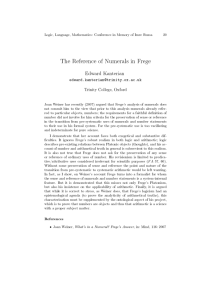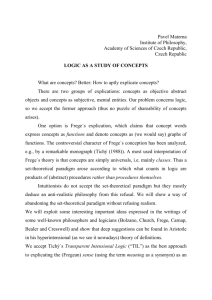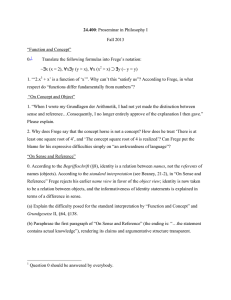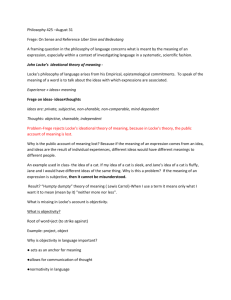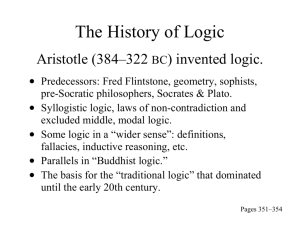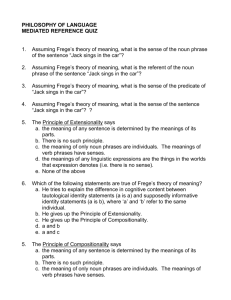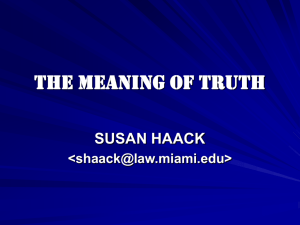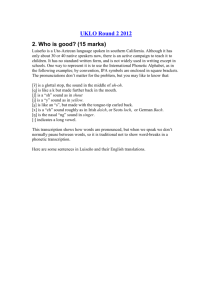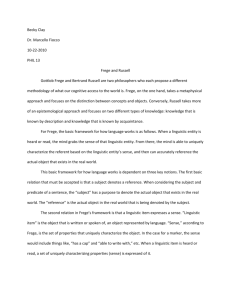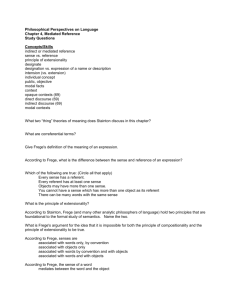some remarks on philosophy and logic
advertisement
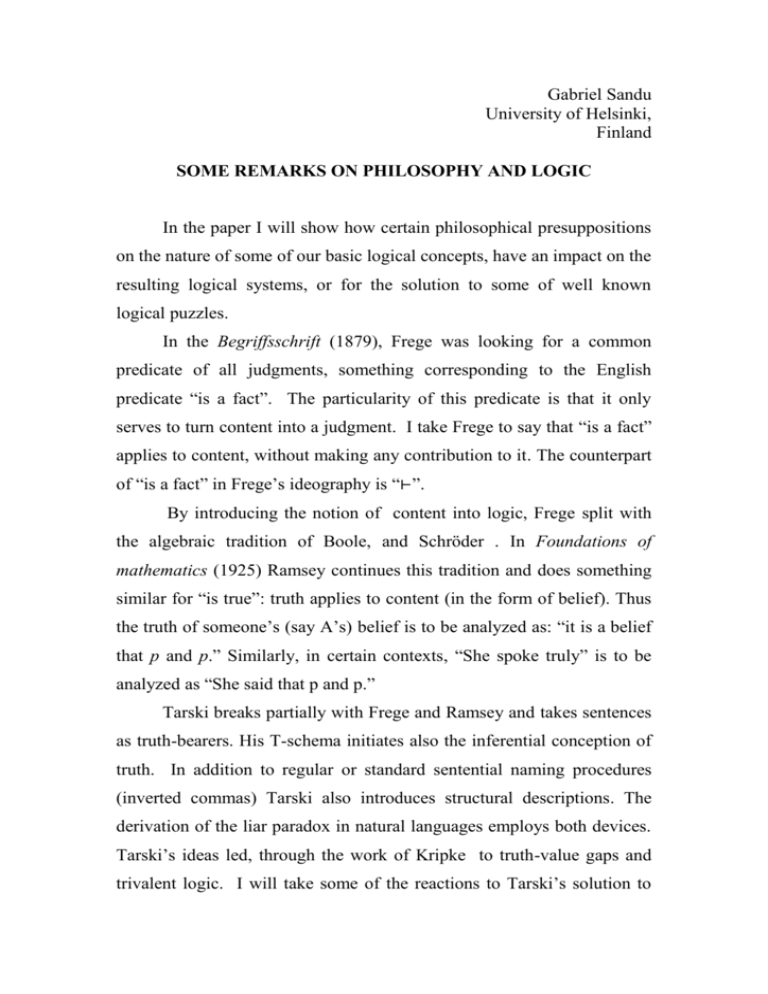
Gabriel Sandu University of Helsinki, Finland SOME REMARKS ON PHILOSOPHY AND LOGIC In the paper I will show how certain philosophical presuppositions on the nature of some of our basic logical concepts, have an impact on the resulting logical systems, or for the solution to some of well known logical puzzles. In the Begriffsschrift (1879), Frege was looking for a common predicate of all judgments, something corresponding to the English predicate “is a fact”. The particularity of this predicate is that it only serves to turn content into a judgment. I take Frege to say that “is a fact” applies to content, without making any contribution to it. The counterpart of “is a fact” in Frege’s ideography is “⊢”. By introducing the notion of content into logic, Frege split with the algebraic tradition of Boole, and Schröder . In Foundations of mathematics (1925) Ramsey continues this tradition and does something similar for “is true”: truth applies to content (in the form of belief). Thus the truth of someone’s (say A’s) belief is to be analyzed as: “it is a belief that p and p.” Similarly, in certain contexts, “She spoke truly” is to be analyzed as “She said that p and p.” Tarski breaks partially with Frege and Ramsey and takes sentences as truth-bearers. His T-schema initiates also the inferential conception of truth. In addition to regular or standard sentential naming procedures (inverted commas) Tarski also introduces structural descriptions. The derivation of the liar paradox in natural languages employs both devices. Tarski’s ideas led, through the work of Kripke to truth-value gaps and trivalent logic. I will take some of the reactions to Tarski’s solution to the paradoxes to be a revolt against his (partial) elimination of content from logic. Some of the more recent solutions to the paradoxes (Charles Parson, Stephen Read) advocate, as we will see, a conception of truth according to which the truth predicate applies either to propositions or to what a sentence “says”. As a result, there is no need for truth-value gaps. Perhaps nowhere is the dispute between the two conceptions better spelled out that in the following passage: Truth, as we ordinarily understand the notion, is a property of things like claims, testimony, assertions, beliefs, statements, or propositions. It is not a property of sentences. But the decision to use sentences as the bearers of truth has proven to be a useful fiction, a good way of getting a certain amount of logic done without bogging down in extralogical questions about the nature of the bearers of truth. But the fiction is harmless only in cases we can unambiguously associate a claim about the world with each sentence, or where the slippage between different claims made by different uses of a sentence is negligible for the purposes at hand. (Barwise and Etchmendy 1987). An interesting elaboration of this claim is to be found in Frapolli (2013). In the paper I will deepen the debate between the two traditions and also extend it to bear on the debate between Davidson and Quine on the interpretation of belief statements and the possibility of modal logic. References: 1. M. J. Frapolli, The Nature of Truth, Springer, 2013. 2. Ch. Parsons, Mathematics in Philosophy, Cornell University Press, 1983. 3. S. Read, The truth schema and the Liar, in S. Rahman, T. Tulenheimo, and E. Genot (eds), Unity, Truth, and The Liar, Springer, 2008, Chapter1. 4. J. Barwise and J. Etchmendy, The Liar: An Essay in Truth and Circularity, Oxford University Press, 1987.
